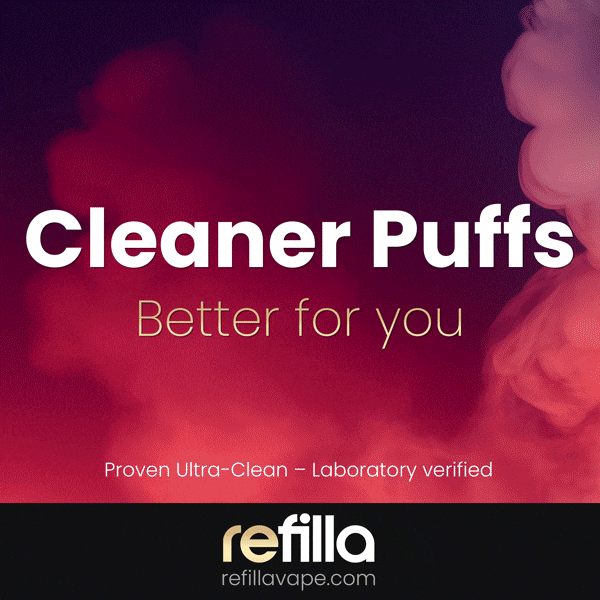DIY e-liquid has become an entire hobby of its own over the last few years.
People have been tinkering with recipes since vaping started, but now the mixing community is vast and thousands of enthusiasts exchange knowledge on a daily basis.
Whether you’re extremely picky on flavour, want to learn a new skill, or simply save a bit of money in your vape budget, DIY e-liquid is a great option, provided you go about it the right way.
Step 1: Base ingredients
Regardless of what flavour profile you wish to create, you need to start with the same base ingredients. E-liquid is generally made with a base of Vegetable Glycerine (VG) and Propylene Glycol (PG).
Depending on your desired vapour output, throat hit and hardware, different ratios of these bases need to be used, so stock up on plenty to find what works best for you.
A good starting point is 70:30 VG:PG for sub-ohm vaping, and 50:50 VG:PG for mouth-to-lung (MTL) devices.
Feel free to experiment here, more VG will result in larger clouds and less of a throat hit, whilst using more PG is ideal for carrying flavour compounds, discrete vapour production and lower viscosity.
Always ensure that your VG and PG is pharmaceutical grade (denoted by BP in the UK, or USP in the US). UK mixers can find VG at most Boots retail locations.
Step 2: Nicotine
Most mixers will be looking to add nicotine to their blends. If you are a consumer in the UK, you will not be able to access nicotine of a concentration higher than 20mg/ml, but fear not, using nicotine shots to make DIY e-liquid is quite simple with an online calculator. If you work in the vaping industry and are mixing to develop a commercial e-liquid, you may be able to purchase more highly concentrated nicotine, which generally works out to be cheaper and more convenient than using nicotine shots.
Again, it’s important to only use trustworthy sources for your nicotine; all shots should be TPD compliant, whilst commercial concentrations are easy to find from a range of reputable wholesalers.
Step 3: Equipment + Environment
You should always wear some form of protective gloves when mixing e-liquid.
Disposable latex or any other sanitised glove are best, to minimise skin contact with nicotine and other ingredients.
You should also mix in a clean environment, on a flat surface, to ensure that your final product is free from harmful contaminants.
There are two common ways to measure the ingredients in your mix. They are both straightforward, but the preferred method (measuring by weight) has a slightly higher up-front cost. If you want to start mixing with minimal investment, a set of blunt tip syringes (ranging from 1-10ml) and 14g blunt needle tips will work fine. The downsides to this method are that it can be time consuming, and many new mixers are inexperienced with reading small syringe scales, but with appropriate attention to detail, you should be fine.
Alternatively, you can opt to use a digital scale. This method is much quicker and is also more accurate.
You’ll need a reliable scale to properly mix this way, and the American Weigh Scales LB-501 fits the bill perfectly, since it’s accurate down to 0.01g and does not automatically go into standby mode.
Step 4: Flavour
There is a countless number of food grade flavourings available to DIY e-liquid mixers, but it’s best to start with known brands, since you can easily find flavour notes, pairings and recommended concentrations this way.
Good brands to start with include Capella, Flavour Art, Inawera and The Flavour Apprentice.
It’s important to note that the potency between each individual flavour can vary hugely, so make sure to do some research, or mix very small test batches if you are unsure of how strong your chosen concentrate is. Never mix e-liquid with a flavouring that is oil based, as this could be extremely hazardous to your health. If in doubt about the contents of a concentrate, it’s best not to take any risks. Read more: Beginner-Friendly Flavourings
Step 5: Calculate + Mix
Now that you have all the required ingredients, it’s time to calculate the quantities and get mixing.
One online mixing calculator is Steam Engine. Simply input all of the relevant values, and this handy tool will give you the information you need to mix your very first bottle.
Step 6: Steep
After mixing your first liquid, it can be very tempting to immediately start vaping it.
In some cases, this will work nicely, but for heavier flavours such as desserts, and sharp citrus flavours, it’s best to allow your e-liquid to steep, in a cool dark place. One week should do the trick for a simple fruit mix, whilst complex desserts tend to improve the longer they steep.







